Travel Memories 2008: On Safari in Africa - Day 5
30/09/12 11:16 Filed in: Travel & Inspiration | Photo Safari

It was a noisy morning. About 4.30 a.m. the Matatus started hooting and at 5 a.m. the mullah called for prayer. Waking up by city noises in the bush felt weird and suddenly the Nakuru National Park felt like a zoo to me, which is a pity, because it’s beautiful.
The group from the truck got up, packed and took off within 15 minutes. Amazing. We were not that fast, but off for the drive with packed breakfast at 6.30 a.m.
There is a road going around the lake with just a few side roads. It’s an easy course and even school buses come and take the children out for a lovely day with the animals. And there were plenty. In the first place plenty of birds and specially flamingos, thousands along the shore. Our drive took us around the lake through a beautiful fever tree forest. Paul told me that there is one part of the shore where we can get close to the flamingos and we made our way to that spot. As we approached the shore we saw a hyena next to the road. She didn’t respond like a healthy animal usually does, being alert, keeping distance or even run off. This hyena must have been injured. She could hardly walk, her eyes were looking empty, she was behaving like in trance, focused to get to a hiding place, what we figured was a dip next to a drainage pipe, where she lied down, looking exhausted and stressed. We let her alone to avoid more stress for her (we actually didn’t know if it was a male or female, difficult to say with hyenas) and decided to come back later. I thought she was dying.
Just about a 100 meters from the hyena was this broad part of the shore with thousands of flamingos. Vehicles can get there very easily and the rest you can walk and this is actually the interesting part, because there were not only birds, but also rhino and buffalo. At this lake one can really forget very quickly that this is the bush and drop guard while busy with the tripod and focused on shooting birds in the most beautiful interaction and suddenly the photographer becomes an easy target for a buffalo. Nothing like that happened, but it crossed my mind and I kept an eye on the buffalo and rhino. Shooting the birds was awesome and the memory cards were filled quickly. We decided to drive a bit closer to the big mammals and had our breakfast between the rhino, buffalos, zebras, pelicans, flamingos and plenty of other bird species. This was also a good moment to set up office to upload the photos and check emails. Yes, check emails. I can’t imagine a more beautiful location for an office and thanks to the satellite technique nowadays this is possible.
For our afternoon game drive we started again our round trip around the lake and we were very lucky to see colobus monkeys. This is a rare sighting and they were just next to the road jumping in the trees. I actually got a couple of good shots to find out later that I lost them somewhere between uploading and backup. Again a lesson in staying focused and being careful all the time.
Our drive brought us to the dip where we left the hyena in the morning. We approached carefully and yes she was still there and for a moment I thought she was dead, but then she tried to lift her head. She was in a very bad shape. There were no visible injuries, so we assumed there could probably be internal bleedings, maybe a kick from a buffalo or something like that from interaction with another animal. There was nothing we could do.
Ute Sonnenberg for www.rohoyachui.com
On Photo Safari: Watching a Lion Cub Learn
29/09/12 18:24 Filed in: Safari Story
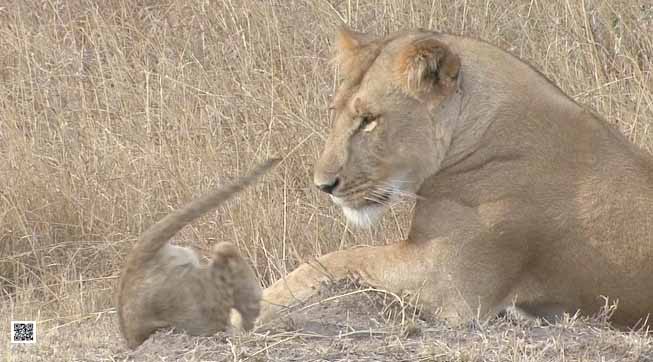
How do lion cubs learn? Just as children by playing, falling and standing up and teasing the adults.
We were on photo safari in the Masai Mara when we spotted a lion pride with a little cub, as it turned out later the little star of the family. There were more sub adult young lion, but only one little cub, the baby of the family. Just as young children, little lion cubs love to play and by doing that they learn important skills for their life in the bush. In this case the little lion cub felt very confident with his mother and aunts around to explore the mount they were lying on. Unfortunately the mount had a whole on one side, what made a good rim to sit on, but for a “feeling confident” little cub it became a trap, not a dangerous one, but he made a good role head first into it. His mother watched him calmly and maybe even amused when he lost his balance and fell over into the whole. But no worries, he was just learning about his balance. He climbed out and found a new target, his older brothers. The first brother’s tail became the subject of learning how to bite in moving objects. His brother made in a gentle way clear that this was not what his tale was there for and the little cub moved on to the second brother. He did that by stalking him carefully, just like he would do during a hunt and then jumped on him, biting in his neck. His brother didn’t even move, the little one was to little to heart him and only practicing hunting. However, the little cub seemed very pleased with his results and took a nice nap using his brother’s belly as a pillow, before he embarked on new adventures of his young life.
Ute Sonnenberg for www.rohoyachui.com
Are all Photographers Don Quixotes?
28/09/12 07:33 Filed in: Photography & Art

Don Quixote: Dost not see? A monstrous giant of infamous repute whom I intend to encounter.
Sancho Panza: It's a windmill.
Don Quixote: A giant. Canst thou not see the four great arms whirling at his back?
Sancho Panza: A giant?
Don Quixote: Exactly.
(From Don Quixote by Miguel de Cervantes )
Have you ever experienced being with friends on a trip, watching a sunset and all of you are photographing the beautiful cloud formations. Each of you will have different photos and you might find yourself explaining your friends that you see a face in the clouds or a lamb or an old man. It might need some efforts to show them where you see it and then in return they start telling you what they see. At the end all of you see the faces and shapes in the pictures of the clouds all of you captured.
Imagine you are by yourself photographing the clouds in sunset and you post it to your social media pages. How many people will see the face and the lamb in the cloud? And how would you be surprised what else they see in your photo? They might not see the lamb and the face, yet all would see the photographer, the moment, the creativity and maybe a giant.
Ute Sonnenberg for www.rohoyachui.com
Seeing Your Workplace through Photography
27/09/12 09:35 Filed in: B2B

We all might have experienced days that we hated going to work, hated the office, the colleagues and anything else that comes with it. Mostly ideas of quitting and going away to better places are coming up; a feeling of wanting to run away becomes very strong. But often this fades away and we stay where we are with a bit of a bitter aftertaste and an uncomfortable feeling about ourselves. This is not necessary. There might have been something that had bothered us and we couldn’t figure out what it was. It might have not even been work related after all; just nagging us and we thought it was work. So going away wouldn’t have made any sense.
Nonetheless these “moments” can be experienced as very unpleasant and disturbing, especially when you can’t find out what it is. In this case think of photography and use it to help you. You will most likely have a camera in your cell phone and the phone will be with you at work. Take photos during your workday and do it without thinking too much, just shoot away. Don’t look at them while you are still at work. Go home, upload the images onto your computer and have a look at them. Maybe even wait until after dinner and then start seeing your workplace with the distance, yet connection a photographer has. You might see things you have never noticed that they are there or you will see your coworkers with different eyes or you will wonder why your desk is such a mess. With this distant view you will go back to work the next morning and it will be different. You might change how you do things, you might talk to your colleagues or you might realize how much you like your work. Whatever it is, the images will have helped you seeing and the unpleasant feeling might have disappeared.
Try it.
Ute Sonnenberg for www.rohoyachui.com
The Joys of Macro Photography
26/09/12 08:50 Filed in: Photography & Art

How often do you do macro photography? You probably answer, not often enough, and that might be a pity. We walk passed flowers every day, our houses and gardens are full with all sorts of little things and creatures (the creatures should be in the garden ) and we miss these opportunities for great photography. Did you ever take a good look at the pattern of the blanket you cuddle in when you watch TV or the colors and shapes of your herb jars?
Macro photography is fascinating and it doesn’t need much to do it, even the iPhone lens can be turned into a macro lens and off you go. See how to do that with this Snapguide and keep in mind the water goes only onto the lens!

More sophisticated and with beautiful result is the work of David Chambon. His insects look exactly like jewelry insects, only that the dew is then made of diamonds or crystals. Most likely the dew came first and was the inspiration for the jewelry artists, however, the images are stunning and very inspiring.
Lets get the lens out shoot macro!
Ute Sonnenberg for www.rohoyachui.com
In the Ray of Light: Nick Ut & Kim Phuc
25/09/12 16:28 Filed in: Photography & Art
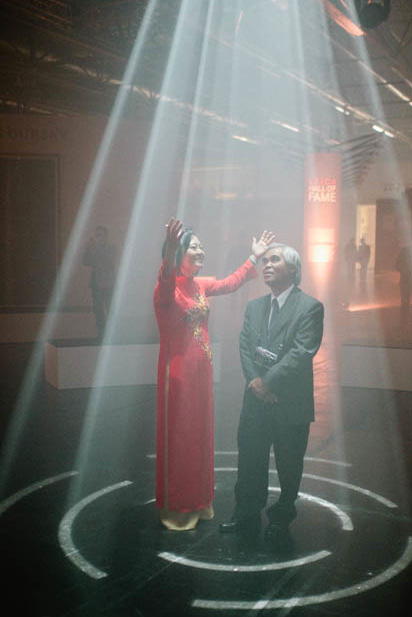
Their lives are connected; maybe even before Nick Ut took the iconic photo of the Napalm Girl, definitely since he took the image that helped to end the Vietnam War.

And now they are here, together in this ray of light at the Exclusive Leica Launch Party on the Photkina last week, the photographer and his “subject”, Kim Phuc, the “Napalm Girl”. How must that feel standing there together after all these years? Does one relive the moment of the initial contact? How must it be for the photographer, looking at the woman he photographed as a child in a very traumatic situation. How must it be for Kim Phuc, looking into the eyes of the man who captured her in a very vulnerable situation with dignity and respect?
Only they know the answers. But maybe all of us have moments we remember, taking a photo that touched us deeply and how we felt or would feel to meet the “subject” again.
Imagine your ray of light.
Ute Sonnenberg for www.rohoyachui.com
Photo from photokina: Michael Zhang
Photo Napalm Girl: Nick Ut
Photokina: Camera Giants & Their News
24/09/12 11:06 Filed in: Photo Tips | Photography & Art

It is over for this year. The Photokina has closed her doors and photography lovers are still breathless from al the camera news that came over them, maybe secretly thinking already of buying one of the new models.
Probably the most bespoke new cameras are the Nikon D600 and the Canon 6D. Both are entry level DSLRs with a full-frame sensor and it makes complete sense to give them almost the same name. If you doubt which one to prefer, have a look at the sensor test from DxOMark and you will see that the result is not surprising.
While the Nikon D600 and the Canon 6D still have a reasonable price, other brands like Leica and Hasselblad introduced more pricy new camera models. They are the Leica M and the Hasselblad Lunar. Well they are great cameras, with an even great price.
For a nice overview and to compare the new camera models from the Photokina, have a look at the WEX page. More detailed tests will only be executed now, so more information on the new cameras will be available soon.
Fortunately Christmas is coming soon and Father Christmas might make one or the other camera dream come true.
Happy snapping!
Ute Sonnenberg for www.rohoyachui.com
Travel Memories 2008: On Safari in Africa - Day 4
23/09/12 10:44 Filed in: Travel & Inspiration | Photo Safari
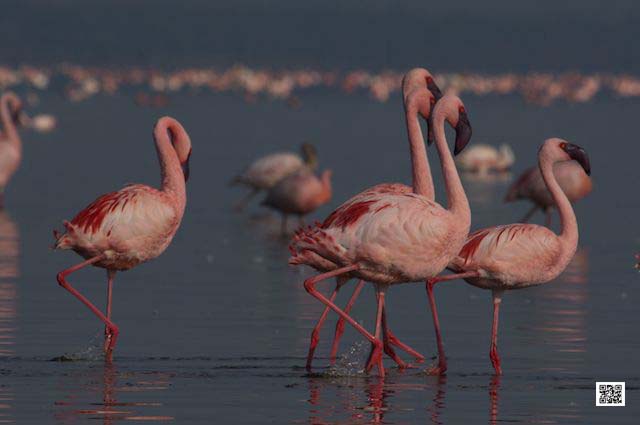
The night was quiet. I heard again the breathing next to my head, which was a hippo according to Alex, grazing at night around the tents.
We left the campsite at about 8.30 a.m. and headed towards Nakuru, our next stop. Paul said we are taking a short cut to Narok, but this wasn’t really the case. We headed away from Narok and made some kind of a circle back onto the tar road. My guess was that we had to avoid driving through the reserve, like we did on the first day, The itinerary was mixed up and we hadn’t paid the park fee for the last day. Anyway our drive brought us along lots of animals and led us through a flood plane, which was the less nice part. All black cotton soil and wet, which is like driving on wet soap and one makes a good chance to get stuck. But we made it without bigger difficulties and hit the tar road to Narok. From Narok we followed the road back to Mai Maihiu and instead of turning right to Nairobi we headed north towards Naivasha and Nakuru. The drive was without any incidents, at least for us. There was a turned over Matatu on the side of the road. Fortunately nobody seemed to be hurt, although the faces looked in shock.
We arrived in Nakuru and to my surprise the Lake Nakuru National Park is only 10 min away from the city centre. The campsite was just behind the gate next to the ranger post under the cover of fever trees and in sight of the lake with its pink ribbon of flamingos along the shore. It was so tempting to just go there and have a look at the flamingos, but Paul reminded me that just recently a ranger got killed by a lion just in front of the ranger post.
We pitched camp and it was raining again. There was supposed to be somebody from the office in Nairobi with flysheets and a new fridge. He arrived just before dinner and the flysheets turned out to be impossible to use. They were big and heavy, made from some kind of synthetic leather, you use in car interiors. The first difficulty was that we needed trees to hang on the sheets, because there were no poles. When we fixed that, the sheets started soaking water and became even heavier what made them hanging down on the tent which collapsed, because of the weight. Anyway, it was late, we were tired and I just wanted to sleep in a not leaking tent. We postponed the sheet issue to the next morning.
We had dinner and suddenly a truck arrived on the campsite. Such a big lorry transformed into an overland bus. I learned that these trucks are doing tours from Nairobi to Cape Town and stop at the campsites in the National Parks. It was like watching a show. Maybe about thirty people pitched camp and had dinner. This happened like a military operation. Always two people fetched and pitched a tent until the camp was set, without any space between the tents and in a correct circle around the cooking area. It took them 15 minutes to do that. Then a designated group started cooking other groups looked after the table settings and other jobs that had to be done. There was no waste of time and manpower. After dinner within 15 minutes everybody was in the tents and ready to sleep. I was wondering if those people were on holidays.
We had an early night too. It was a long day.
Tweet.
Ute Sonnenberg for www.rohoyachui.com
On Photo Safari in the Serengeti: Lions on Warthogs
22/09/12 20:09 Filed in: Photo Safari | Photography & Art
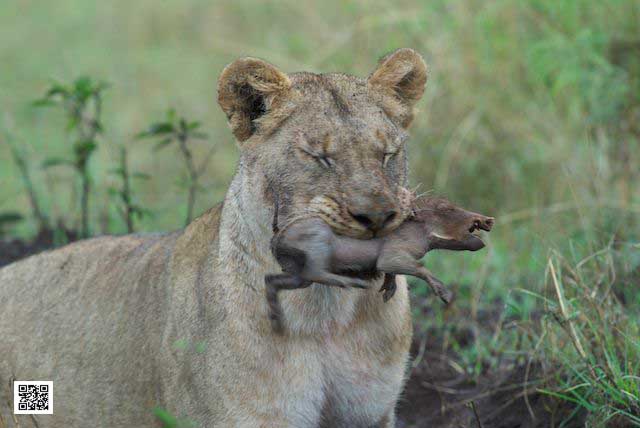
We were on a morning game drive on the Klein’s Concession in the Serengeti. It had rained and the moisture was still hanging in the air when we drove through the forest just behind our camp. Our Masai tracker Steve spotted lion, feeding on a kill. As we came closer we saw that it were all young lion, sub adults, probably on an expedition not far from the main group of the pride. They were feeding on a warthog and we could see that they had dug out the warthog from his burrow, lots of earth had been moved and there was a big whole.
After a while watching them, one lioness went into the warthog’s burrow and came out with a young warthog, still alive and screaming. She was looking like she didn’t really know what she was doing, following more an instinct then being hungry or wanting to hunt. The young warthog would die without its mother, either starving to death or being killed anytime later by other predators or scavengers. It was better to make it short and that might have been the silent assignment of nature for this lioness. She killed the young warthog and ate it and she went back to the burrow and came back with another one and another one. There had been three young warthog without mother and the young lioness did what she had to do, although she didn’t do it fast. Our Masai tracker Steve couldn’t watch it, because the youngsters were still alive for a few moments. He wanted her to do it fast and easy for the little ones, but maybe the lioness was just too inexperienced to understand that.
It was an impressive sighting, showing the innocence in the face of a young lioness while holding a struggling young warthog in her mouth, causing it pain and stress, before eventually doing what she is supposed to do. Nature is pulling the strings.
Tweet.
Ute Sonnenberg for www.rohoyachui.com
Photography: An Eternal Romance with Light
21/09/12 16:18 Filed in: Photography & Art

What is romance? “Romance is more an inner state of being emotionally open without expectations and conditions towards people, animals, plants, things”, anything, it’s a state of unconditional love. (José Stevens, Tao to Earth)
Photography is working with light and all in photography is determent by light, the settings on the camera, the composition, the colors, contrast, depth, just everything. Sometimes the light “isn’t so great”, yet photography is capturing the moment beautifully, with some efforts, but it does. On other occasions the light is “perfect” and photography happens effortless. Whatever it is, photography manages to work with light, under any condition, taking the light as it is or creating the light as it is. Photography loves light unconditionally, well maybe sometimes a little curse slips the tongue, but this is only part of the process.
Photography and light are a romance and as long as photography will be done the romance will be there, maybe for eternity.
Tweet.
Ute Sonnenberg for www.rohoyachui.com
Steve McCurry: The connected Eye
20/09/12 17:58 Filed in: Photography & Art
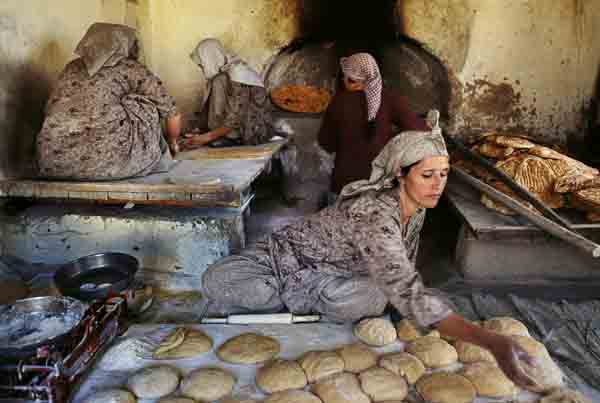
When looking at Steve McCurry’s photographs it feels like tapping into the soul of the moment or person he captured, like in the image above from his series “Food for Thought”.
Repeatedly occurring words in his quotes are “soul”, “grounded” and “hope” and yes, they are in every image, almost penetrating the viewer while looking at them.
Obviously Steve McCurry has the deeper connection with his subjects, capturing souls and hopes, yet his solid grounding makes these deep insights possible. Soaring on soul level requires grounding, just as artistic heights in photography require a solid technical grounding.
He got both and well balanced. His photography is food for thoughts.
Tweet.
Ute Sonnenberg for www.rohoyachui.com
Photokina & Photo Safaris: A Love Affair?
19/09/12 09:25 Filed in: Photo Safari | Photo Tips
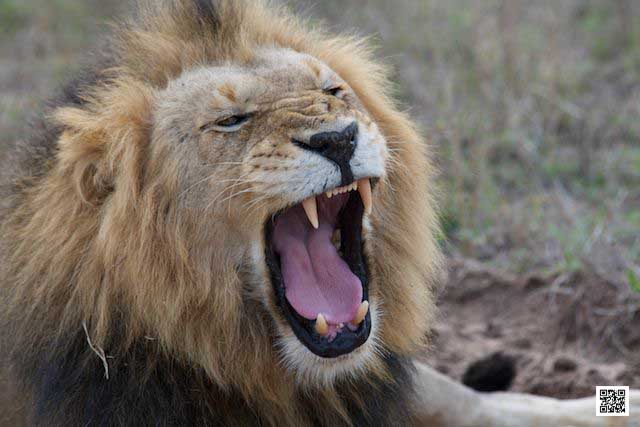
The Photokina has started and millions of people all over the world are waiting for the technical photography news to flood into their inboxes. Will Canon come with this 46 Megapixel camera? How will be that Nikon D600 entry-level full-frame camera? There will be new “Porsche” and “Mercedes” and “city cars” for the photographer to play with. But will they be of any meaning for the success of a photo safari?
Technical photography gear is important for photo safaris. You will need a camera with a reasonable speed in order to photograph the fast moving objects and you will need a good zoom lens to get them in the picture, recognizable as a lion and not only as an undefined dot. But do you need 36 megapixels? Most likely not. As fantastic as the Nikon D800 is, it is not the most suitable camera for a photo safari. Shooting these big files costs speed and memory card space and if you have a proper zoom lens, you don’t need to crop afterwards.
Do you need all the accessories, tripods, gadgets, bags and straps? Keep it simple. Don’t get lost in technology. On a photo safari you are in the most beautiful and demanding environment for photography and not in a studio. You got to connect with this environment, understand it and translate it into photographs. Too much technical gear will only be a burden. Keep that in mind when packing and for the rest enjoy the inspiring news from the Photokina.
Tweet.
Ute Sonnenberg for www.rohoyachui.com
Susan Sontag & Goethe: Photography & The Sorcerer's Apprenctice
18/09/12 12:11 Filed in: Photography & Art | Philosophy

“Recently, photography has become almost as widely practiced an amusement as sex and dancing – which means that, like every mass art form, photography is not practiced by most people as an art. It is mainly a social rite, a defense against anxiety, and a tool of power.” (Susan Sontag, On Photography, in 1971)
Photography is part of our daily life. It gives us joy, lets us express our creativity and makes us grow as artists and persons. It captures moments for us and lets us relive them when we would like to experience them again. It captures the love for our families and visualizes our dreams. Photography is magic, accessible to everyone.
Magic needs to be wielded with care and responsibility. Like in Goethe’s “The Sorcerer’s Apprentice” it can go wrong and the magic tool gets out of control. One of the recent examples is the death of the American ambassador in Libya. When his body, most likely already dead, was held up and about to be carried away, bystanders took photographs of him in this vulnerable moment and the New York Times seemed only be too happy to publish them.
In the Netherlands paramedics have problems doing their work, because bystanders interfere with them in order to take pictures with their cell phones from, for example car accident victims. And they even get violent when police or paramedics try to keep them away.
On the other side of the scale the topless photos of the Duchess of Cambridge are silly (who hasn’t seen a pretty young woman topless on a beach) and intrusive to the private life of a person.
And now with all these “sorcerer’s apprentices” around how do we stop this?
Most likely there will be no easy way to stop this. It will take time to create a general consciousness of respect and dignity, a consciousness that something powerful as photography needs the “master” and not the “apprentice” to unfold its entire beauty and strength to serve mankind as a tool of growth. And yet, photography itself is the tool to enable people to develop exactly this consciousness. One got to drive a car in order to learn driving and one got to practice photography in order to become a “master”.
Happy growing.
Tweet.
Ute Sonnenberg for www.rohoyachui.com
Seeing New York Fashion Week with Google Eyes
17/09/12 15:58 Filed in: Photography & Art | News & Awareness
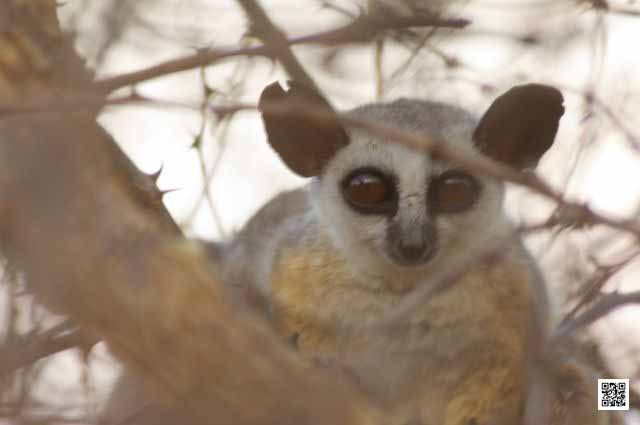
The New York Fashion Week is always a mega event for photography, of course fashion photography, but this year not only the photographers took photos, also the models did. They even made a documentary while walking on the show.
Designer Diane Von Furstenburg embarked on an experiment and had het models wearing Google Glass. Not only did it look fancy, they also made a film of the show. Watch it here.
Tweet.
Ute Sonnenberg for www.rohoyachui.com
Travel Memories 2008: On Safari in Africa - Day 3
16/09/12 15:23 Filed in: Travel & Inspiration | Photo Safari

Early wake up call at 5.30 a.m.. I wanted to shoot a sunrise. We were up quickly and off into the park. Paul had a tree in mind which would make a perfect picture with the sunrise in the back. We were racing. The sun came up quickly. And there was the tree. One of those beautiful umbrella trees set out as dots on the big planes of the Mara. While racing there I had mounted the camera on the tripod and was ready to shoot when we got there. It was awesome. This gracious tree in the golden light. I was happy. It was a good start of the day.
While getting back into the vehicle we heard a lion roaring. We thought immediately of the pride of lions we had left the previous night and headed towards the area. Unfortunately when we got there we only had to follow a trail of vehicles. The lions had settled around a mount. The females and males were lying around in the shade of bushes. The cubs were climbing the mount with their full tummies. They must have had a kill.
It should have been ideal for photography. Blue sky, sun, a pride of lion with playing cubs, but it was hectic. Many vehicles were there and made a half circle around the pride. But when more vehicles arrived the circle became close to a full circle and this is not the background for the lions you want. Some vehicles arrived and drove through the whole scene, the drivers were sometimes very close to drive over a lion’s tail, but it didn’t look like the lion were irritated by that. Maybe we were a sighting for them and they were amazed what a competition was going on in front of their eyes.
In sight a few hundred meters away, another group of vehicles was watching something. The group was growing, so we assumed it must be a cat and they were all looking at a tree, so it must be a leopard. We left the crowded lion sighting and drove over to the tree. Yes, there was a leopard in the tree, but the sighting gave only space for two vehicles and the visual was 2 out of 5. Nonetheless there were six vehicles fighting for a good view on the leopard. It was ridiculous and we decided to come back later and drove back to the lion. We were not the only one to drive back and forward between the lion and the leopard. It was an absurd scene of vehicles racing between the two sightings trying to get in a good position. The whole scene felt like it was all about the humans and their competition and not about experiencing the beauty of wildlife. After a last attempt to get to see the leopard we left. A vehicle had parked in front of the animal, blocking the space for another one, people sitting on the roof and moving constantly, so that parking in second row made no sense too. I had enough.
We heard that three cheetah males had been seen and we went there. It was in a different area and a bit of a drive. Another vehicle followed us. It was a guy on his own cruising around in his Land Rover. He asked Paul to stop and talked to him in Swahili. After that we carried on and he tailed us. I asked Paul what this is about and he told me that the guy doesn’t know the way to the cheetahs and asked him to guide him there. I stopped the car, stepped out, walked towards the Land Rover and stopped him. What did he think speaking sneaky in Swahili to Paul and using a guide I had paid for to get to the sighting. I wouldn’t mind, but ask me too. Obviously the piled up anger from the vehicle sighting race of the morning came onto that guy. I apologized, but since then he kept his distance.
The cheetah were in rough territory. Rocks were lying everywhere and access was difficult. Also there the same story. The sighting gave space for two vehicles and one was blocking it. Sometimes I’m not sure if the drivers just don’t know how to handle a sighting. This one felt like that. The cheetah were beautiful, but my photographs were not. I guess the emotions of the morning distracted me and I wasn’t focused, but the animals were awesome.
We drove back to the camp to have lunch and a rest. That would be the chance to reset for the afternoon game drive. And it did. The lunch was nice and I had a shower and a nap. I was ready to go out again.
The strategy for the afternoon was to go back to the lion and to see what more is coming on the way. Rain came and the light went bluish and soft. The lion were still wide spread around the mount. We decided not to go anywhere else. Just to stand our ground and see what’s going to happen (there was enough space for about twenty more vehicles). It was lovely. The cubs were playing with their mums, some of the females were taking position on the mount to scan the area for prey and the male lion were lying in the bushes. And then the rain started again. I loved to watch one female who was on the top of the mount, trying to hide her head between her paws against the rain. She closed her eyes, waiting the rain to stop. She was beautiful.
We too closed our “eye”, the hatch and went back to the camp, were leaking tents needed attention and Alex was waiting with dinner.
Ute Sonnenberg for www.rohoyachui.com
Photo Safari in the Serengeti: A Day with Lions
15/09/12 11:19 Filed in: Photo Safari | Travel & Inspiration

It was in the Serengeti when a pride of lion was lying in the grass, cubs playing and the females keeping an eye on the plains. This is just that incredible thing in the Serengeti that you can overlook the entire area and not only the lion can, also the photographer when looking out for photographic opportunities on a photo safari.
We spotted the lion on a morning game drive and while watching and photographing them a herd of zebra approached. That was promising. Maybe we could witness a hunt! We retreated a bit from the scene to not disturb the animals and waited. The zebra herd was lead by a stallion. He walked in front of them scanning the area, head up and alert. The lion pride had disappeared from earth as soon as they saw the zebras approaching. They were all down in the grass, no movement nothing at all to see of them. Nonetheless the leading zebra stopped about 60 meters away from the pride. The rest of the zebra herd just carried on grazing, but stayed behind the stallion, some of them even playing. The stallion and the herd stood there for at least 10 minutes and just at the moment that the stallion was about to carry on the big male lion of the pride popped up his head. He had been sleeping away from the females and cubs in the grass and had just woken up, wondering where his females are. When the stallion saw he male lion he stopped again, looked at him and them turned around and walked away where he came from. The herd followed him. There was no fast movement of any zebra, no panic, nothing and there was not attack of the lion. The females popped up their heads when the zebras had turned and walked away. Only one sub adult female an after the zebra, but only for a short distance. Nobody joint her. The lionesses are too wise to waste any energy. They knew they wouldn’t have a chance to catch a zebra, so they just carried on with what they were doing before the zebras arrived.
This was an incredible sighting and we decided to stay with them, but move away for now to have some breakfast at a nearby rock. While having breakfast we saw that a buffalo heard was approaching the lion pride and the buffalos had a completely different strategy than the zebras. They had seen the lion and they immediately started attacking them, because they wanted access to a nearby water whole (probably the zebras also wanted to get to the water whole, but they do not have the strength of buffalos). The buffalo’s lion chase made that the pride was scattered over the whole area, which makes the weak. After a few moments also the lion seemed to realize that and organized themselves again. The buffalos were at the water whole drinking. The lion let their cubs under a distant group of trees and each lioness and young male lion took position on a termite mount. They set up an ambush for the buffalos for when they would leave the water whole. Ambush in this case meant that the lion had positioned themselves to take advantage of a hunting chance, but they were completely visible on the termite mounts. They were waiting. After quite a while the buffalos started moving off, but unfortunately for the lion in the wrong direction away from their positions. The lion left their termite mounts and met with the cubs under the trees. All were lying down in the grass again, again not wasting any energy.
Later on in the afternoon, still at the same spot and still lying in the shade and the cubs playing, a heard of elephants approached. And also the elephants made clear that they don’t want the lion around and chased them away. The lion moved off and lied down in the grass away from the elephants. They knew there was no hunting opportunity and again they saved their energy for better opportunities probably occurring during the night.
Being able to follow the lions throughout the day, well actually being with them the whole day in the same spot, was a great photographic opportunity and also a great learning experience from the photographic point of view and animal behavior point of view. They are so much wiser than we are … well probably except that male lion.
Ute Sonnenberg for www.rohoyachui.com
Photography is Visual Poetry
14/09/12 10:34 Filed in: Photography & Art
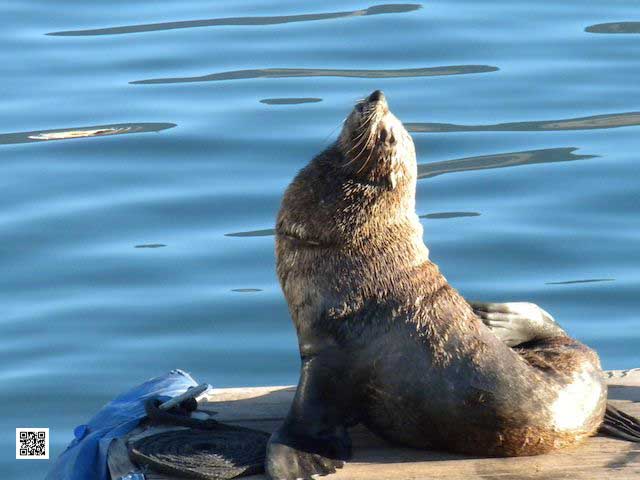
Poetry is something beautiful, but unfortunately not all of us are able to wield words in a way that they fall into poems. Yet we all got poetry in us and we all can press a shutter to create visual poems. Words unfold by looking at an image and a poem takes shape and we all understand without any actual word.
What would be the seal’s poem?
Ute Sonnenberg for www.rohoyachui.com
Photography Genre Philosophy
13/09/12 15:15 Filed in: Photography & Art
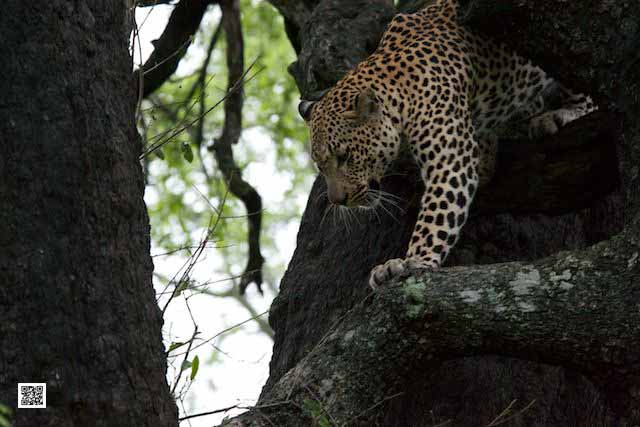
We know several genres of photography like editorial, nature, landscape, wildlife, fashion, interior, photo journalism and more, yet there is one that comes back in all of them and is one of its own, the photography genre philosophy.
The photography genre philosophy is determent by the depth of thought, the depth of consciousness and the depth of connection. It includes also images that might under different criteria be considered as not perfect, yet one gets drawn into them. There is no wrong or right, all is relative, all authentic. The images visualize the underlying dimensions of the moment, allowing viewers to tap into non-physical levels as thoughts and emotions.
Reading images that way makes them a powerful tool for all kinds of purposes and the photography genre philosophy “The Glass Bead Game” (Herman Hesse) of photography.
Ute Sonnenberg for www.rohoyachui.com
Visualization: Businesses utilizing Photography for Communication
12/09/12 08:55 Filed in: B2B | Photography & Art

How often does it happen that we talk to somebody and can’t get our message through to be understood? How often are we saying something and the person who listens hears something completely different? You might know the old game of whispering something in somebody’s ear and this person whispers it into the next person’s ear and at the end of the chain of people the message isn’t at all what it was in the beginning. Talking is such a poor communication tool
Poor communication can lead to difficult situations in personal life and in business. Especially in business with work teams of completely different personalities and backgrounds, communication can be a real challenge. It starts already with getting to know each other. How would it be, if we just could let images speak for us and tell our colleagues who we are and what we need to be happy at our work place? Photography visualizes what we try to tell and everyone can understand it. Even uneasy situations of “how to tell my colleague that I need some silent moments to focus on my work” can be visualized and will not be experienced offensive by others.
Photography is the easy access key to visualization of about everything for easy and clear communication in business and at home.
Try it
Ute Sonnenberg for www.rohoyachui.com
How to make an Infographic
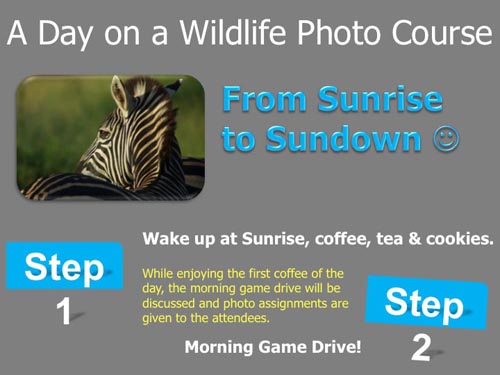
In case you are wondering how people make these awesome infographics you can see on Pinterest and other social media, here are a template, an example and a guide how to do them.

The template is from Hubspot and available here. And a step by step Snapguide can help you to get it easily done.
Enjoy making your own awesome infographics and get your message out.
Ute Sonnenberg for www.rohoyachui.com
Peter Beard & Francis Bacon - Photographer and Painter
10/09/12 19:26 Filed in: Photography & Art
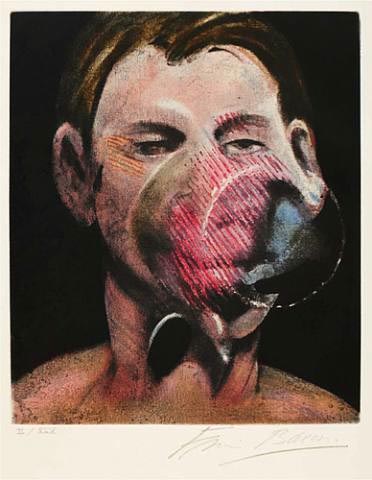
“Sometimes there is nothing better than a bad exposure.” said Peter Beard about photography during an interview with Steven M.L. Aronson and he meant to explain that lots of his photographs happened just by accident, and he was hoping for really good accidents and it turns out his photography is really great.
Beard studied art history at Yale and took color courses with Josef Albers, Neil Williver and Al Katz, but as he says, Richard Lindner and Francis Bacon were his real art teachers later in life.
Peter Beard met Francis Bacon at a presentation of his book “The End of the Game” in London. Bacon had just purchased the book and invited Beard immediately into his studio. Beard took polaroid photos of Bacon’s work. The polaroids became a source of inspiration for Bacon regarding colors and shapes in his paintings and in return Beard learned from Bacon essential things like looking at old masters to learn about light and composition.
A friendship had developed and Bacon painted Beard several times. I dare to say that Bacon’s way of seeing art, reflects in Beards work and is one of the reasons of the mesmerizing impact Beard’s artwork has.
Read more in Peter Beard Trade Edition, available at Taschen and get insights in this creative friendship of two amazing artists.
Image above via HH Fine Art.
Ute Sonnenberg for www.rohoaychui.com
Travel Memories 2008: On Safari in Africa - Day 2
09/09/12 18:26 Filed in: Travel & Inspiration | Photography & Art

It was a good first night in the bush. The sleeping bag I had brought with me was to warm, but that was little concern. Everything else was fine. It hadn’t rained that night, so the tent was dry too.
We got up at 6 a.m. and had a quick breakfast. We planned to stay in the bush for the whole day to see a crossing at the Mara River and it’s quite a long drive to get there. Alex made us a packed lunch and we were off.
We drove to a part of the river where wildebeest had been seen and that meant there could be a crossing. Very few vehicles were waiting in a safe distance from the river to give the animals the space to gather together and get ready to go. It’s all about patience. They start moving and everybody gets excited and then they change directions and the waiting starts again. After a while we thought, just let’s try another usual crossing spot and we headed further up the river.
On our way we heard about a leopard in a tree and we went there first. A female leopard had a kill and was feeding on it. Only three other vehicles where there and it was a relaxed sighting. The female was a bit restless and annoyed by birds that were shouting at her. She went off and on the tree, getting a drink and thinking what to do next. She decided to stay in the tree and to have a nap. The birds carried on with their noise and her ears were flat in annoyance. We enjoyed being with her for hours. The other vehicles had gone to their lodges for breakfast and we stayed alone with her, enduring the increasing heat and the camera always ready in case she was going to move.
Our only source of electricity during the safari (also in the camps) was the vehicle. An inverter transformed the power from the cigarette lighter into power to recharge the laptop and batteries. That meant one had to be very conscious about using battery powered equipment. When and for how long do I need the laptop? When can I recharge the laptop again? The laptop couldn’t be recharged while being in use and only when the vehicle was driving or the vehicle’s battery was full after a longer drive. It would drain to much power from the vehicle’s battery and the inverter switched off automatically when it became critical. For that reason any chance of battery power had to be used wisely. That made me setting up “office” while we were with the leopard. A couple of memory cards were already full and it wasn’t even lunchtime. I had to upload them to the laptop. So while I watched her and had the camera ready to shoot, the laptop was running and the processing had to be watched too. I was tired by noon. We decided to leave her alone and carried on to the river.
Paul and I had different opinions on where a crossing would be possible. I thought let’s go to the main crossing where they usually gather and he thought let’s check first other possibilities. So we first checked on other spots and got to the main crossing as the last option. There were probably about 12 vehicles and they had the good news for us: just half an hour ago about a thousand wildebeest had crossed. We stayed to watch the last 5 or 6 to cross the river and Paul became cross with himself. It made no sense to get angry. It was gone and that’s just how it is with looking for wildlife interactions, you never know for sure what and where it’s going to happen. It’s on their terms.
We started heading back to the camp, a long drive and a thunderstorm building up at the horizon. It started bucketing in an instant. You could hardly see the road and Paul got nervous. He told me later that he panicked a bit, because the road had a couple of deep dips and getting stuck was the last thing you want. When the rain stopped we were on safe roads and were rewarded with the sighting of a big pride of lions. The light just after the rain was soft. The playing cubs and mums looked smooth. A serene scene of family life.
From the lions it was just a short drive to our camp. It was about 6 p.m. when we arrived and still raining there. I fetched toilet paper and dried my tent, organized the luggage that I could remove it easily if it would start raining hard at night, had a shower, a quiet dinner and wanted nothing more than to sleep. I was so tired.
Ute Sonnenberg for www.rohoyachui.com
How a Leopard Family works

The Sabi Sand in the greater Kruger National Park in South Africa are famous for their leopard sightings. And because one can see leopards pretty often, it is possible to follow their family life quite good, especially when working as a ranger and being out in the bush every day.
Leopards have territories. The female territories usually do not overlap, but the male territory overlaps or rather covers the territories of a couple of females. These are the females he is mating with. Often female leopards stay close to their mom and set up territory next to her. Leopards are not as solitary as one might think, they usually only don’t want to be seen and that makes that we can’t follow their movements. But in the Sabi Sand we can. They let us often see what they are up to and this is very interesting. Don’t get me wrong, they are wild animals, trusting that they will be left alone and not threatened by humans.
There was this one family, a male leopard, an older female, her daughter and the two cubs of the daughter. The older female, lets call her granny was already pretty old, but a strong spirit. She was more or less allowed to pick a bit more from the male leopard’s kills and also the daughter was looking after her. And granny did what grannies do. The daughter left one of her cubs with granny and granny raised the little “boy”. That gave the daughter more freedom and strength to raise the other cub and to hunt. Some days the daughter left even the cub she had with her with dad, just to check out something. And dad was staying with the cub, looking after it until it’s mother came back. It was observed that the cub thought to test daddy and slapped him with his little paw. Daddy showed the little one that he can do that too and the cub was rolling all over the place.
When observing these beautiful interactions one learns to understand leopards so much better, their close relationships and family dynamics. The little “boy” raised by granny is now a big boy and still tolerated by dad in his territory. It might be not for nothing that he looks a bit like a spoilt boy, raised by granny and having the sweet life of being allowed in the save territory of dad. He is the one on the picture above.
Granny doesn’t live anymore. She became 17 years old, a great age for a leopard in the wild. She was a very special and strong spirit.
Ute Sonnenberg for www.rohoyachui.com
How Photography Identifies Talent in Work Teams
07/09/12 09:06 Filed in: B2B | Photography & Art

Talents in companies are in human resources language called high potentials. The companies do a lot of work in identifying and supporting their high potential employees in order to secure the company’s future and to continue success. This process is complex and often not easy. Who is the right person for what is the major question. There are several personality tests, role plays, analysis and assessments, but still about 30-40% of the choices turn out to be the wrong choices. Next to unforeseen life events as a reason for dropouts, people are able to pretend to be the right one despite all the tests. There are books that analyze personality tests and assessments, and the tested persons can learn in advance what the expected answers are for a certain position in a company and just fill it in. So, how can one get to the essence, to the real potential in relation to a certain company position? The answer is photography. Photography always shows also the photographer and the photographer’s potential in relation to a defined purpose. Photography is a very powerful tool in the process of identifying high potentials. It needs to be wielded with care and knowledge. And it can make the life of human resources a lot easier.
Ute Sonnenberg for www.rohoyachui.com
How to Re-Imagine Photographic Opportunities
06/09/12 11:45 Filed in: Photo Tips | Photography & Art

Have you ever had moments that you felt the urge to photograph, but had the feeling that there is nothing around? Like days without sun, again the same garden, not the right equipment to capture that or thoughts like ‘this is anyway not going to be good”. In these moments we might do a lot of imagination, but not the kind of imagination that stimulates us to see and shoot. We might imagine only the downside of everything.
How can we change that? Well, simple enough through photography. We just need to get through this wall of negative imagination and it doesn’t need to be an effort. Just take your cell phone, most likely you don’t even have to move for that, because it’s always with you and start shooting away. Maybe choose one of your photo apps and click and see what comes out of it when photographing your TV. Without even noticing you will be drawn into your photography and the silliest subject will become highly interesting and arty. You just started seeing again and your imagination will be stimulated to artistic heights.
Try it, also when being in the office
Ute Sonnenberg for www.rohoyachui.com
How to Photograph Love
05/09/12 11:06 Filed in: Photography & Art

We might first think of symbols like roses, a sunset, a puppy, a baby or simply beloved family members. Yet we don’t need symbols to photograph love. Love is in all our photographs; love is the connection we have with our photographic subject.
But we might think, I don’t love this tree, yet you photograph it, yet it does something to you, maybe the light, the reflections, the movement of the leaves; it induces something that makes you photographing it, ending up telling everybody how you love this picture. The picture shows your love for life, light and whatever love wanted to express itself the moment you saw the tree. And now it’s captured in the image, inducing love every time you look at it again.
Ute Sonnenberg for www.rohoyachui.com
Annie Leibovitz: A Dance with Light
04/09/12 15:42 Filed in: Photography & Art
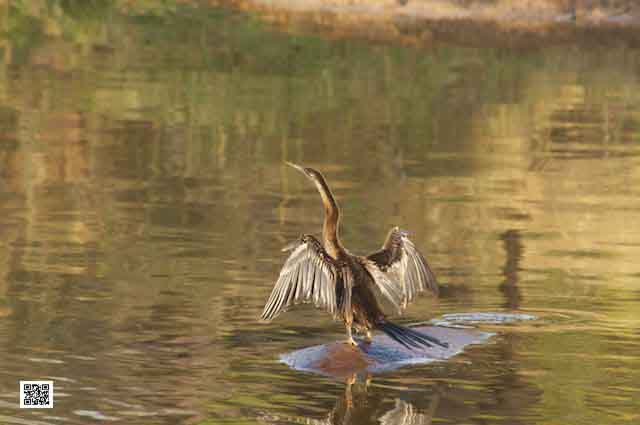
Nature is so powerful, so strong. Capturing its essence is not easy - your work becomes a dance with light and the weather. It takes you to a place within yourself. Annie Leibovitz
Maybe the strongest and most powerful nature is the African bush. Photographing its essence is an intense experience, unleashing energy, imagination, inspiration and creativity. Being on a Photographic Safari is an incredible photographic discovery. It brings us back to our origins and induces strengths we didn’t know we have. And from these places within ourselves it brings us back into daily life radiant and strong. And when a bad day at the office drained this energy, we just look at the images and restore.
And we dance again with light.
Ute Sonnenberg for www.rohoyachui.com
Copyright & Pricing in Photography
03/09/12 10:40 Filed in: Photo Tips | Photography & Art
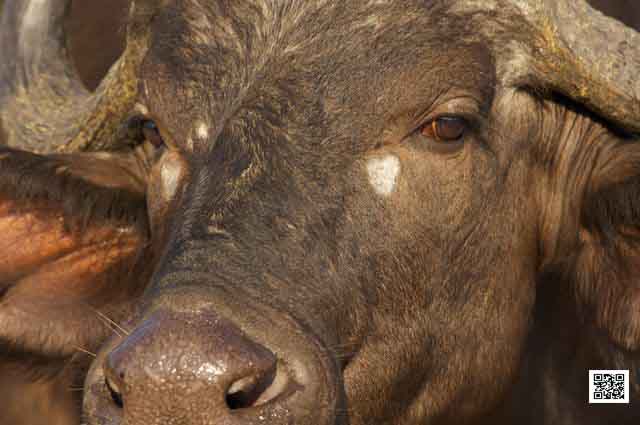
The question of copyright and prices in photography can be a very confusing matter. What are the laws, what rights do I have in the digital era, how can I deal with infringements, who can help and what can I charge for my photography? There are many answers from different sources and there are a few professional sites that really help.
Have a look at the website from EPUK, the platform of the Editorial Photographers United Kingdom & Ireland. Below is a link to their write up on copyright, from the beginnings until today.
EPUK Editorial Photographers United Kingdom & Ireland:
Copyright in the 21st Century:
Let’s start with a brief history. Copyright began about 300 years ago with the Statute of Anne. This law for the first time turned something made of thought into an object that could be owned and traded and which could be regulated by the government and courts. Read more
On the pricing FotoQuote is the tool professional photographers consult for their pricing. It allows easy Rights Managed calculations for all regions in the world and is also used in the Photoshelter galleries.
Here the link to Foto Quote:
fotoQuote Pro is a photo price guide that provides pricing and negotiation information for stock and assignment photography.
Read through it and find what suits you and your photography purposes best. These tools can be very helpful when suddenly asked for an assignment
Ute Sonnenberg for www.rohoyachui.com
Travel Memories 2008: On Safari in Africa, Day 1

I was on safari in Africa and it was pouring rain and it was hot. It was tough and it was beautiful and it all started in Nairobi.
Departure 8.15 in the morning. The safari vehicle was waiting for me with Paul the driver and Alex the cook. Alex was tired. He had worked a lot and fell a sleep as soon as the vehicle started to move. We headed towards the Masai Mara through the suburb Muthaiga to get onto the road to Mai Maihiu, a more scenic road than the A104 they said. I’m actually not sure if the road was more scenic. For my feeling it took longer than the highway and it was probably not such a good idea, because it was already a long drive to the Mara. Anyway we took this road and it was a good road, built by Italians after the war. After Mai Maihiu the road was really bad. I guess lots of traffic to the Mara from Matatus, safari mini vans up to trucks and 4x4s like us. It was hot, dusty and bumpy. The road went through dry land. Every now and then a settlement or market and some animals, most of them cattle, little wildlife.
We reached Narok after a three hours drive and had a break at a gas station. Narok is a busy town and it seemed that everybody took a break there to get ready for the Mara. Lots of mini vans with tourist, having a last or first (depends where you come from) bathroom stop, a drink and a snack. A good business for the inventive, friendly and persistent vendors. The gas station was fine, except that there was no gas. So, Paul went off to get some somewhere else and we hit the road again.
The tar road stopped shortly after Narok and from there it was a bumpy dirt road to one of the gates. After an hour and a half we entered the Mara through the Sekenani Gate and it was like a miracle. It was dry land until the gate and from there it was green with plenty of wildlife. It almost felt like entering a zoo, like the animals know they are supposed to be there, because it’s the famous Masai Mara with lots of wildlife. It made immediately everything worthwhile, just to be there with the animals. Another 40 minutes drive brought us to another gate, the Talek Gate where we pitched camp just outside the gate at the Crocodile Campsite. This was after a 6 hours drive, including the stop in Narok and we drove just 245 km. The campsite was next to the river Talek and a bit further was the Masai shopping center. We choose a nice spot and two Masai came to help setting up the tents, which was nice, I guess for all of us. Alex the cook was very strict with the kitchen stuff. Nobody was allowed to touch it and he set up his kitchen in a secure cabana, which has the function of a kitchen. Secure means for the food. The animals can’t get to it and that makes the life of the cook much easier. The facilities where ok. Simple but tap-water, shower, a sink and dry toilets. And my tent looked good as well. A light dome tent with enough space for me and my equipment. So, everything looked good and I was ready for a small snack and off on the game drive.
We drove for 15 minutes and there was a leopard in a tree and we drove another ten minutes and there was a pride of lions and a cheetah with three cubs. This is unbelievable. Three big cats in one game drive just around the corner from the camp. But that’s also a result of the Mara of the cell phones and because it’s so crowded with vehicles. The Mara is quite flat and open and when you see more than seven vehicles looking at something you know it’s a cat sighting. If there are no vehicles in sight, just call other drivers and they’ll tell you. I was struggling with that a lot. On one hand you see really lot’s of animals and on the other hand it’s a disaster with all the vehicles on the cat sightings. About fourteen vehicles fighting for the best spot making a game drive a competition and stressful event for all, the drivers, the guests and the most for the animals. There are rules, some kind of, but it seems a sport to get around them. It annoyed me a lot that I had to spend so much energy on anger about vehicles blocking a sighting forever, driving through the picture and getting so close to the animals that they almost drive over their tail. It started raining, or no actually it was bucketing. Great to see and lovely shots of wet cheetah cubs playing with mum. And I was worried about the tents.
When we got back to the camp the rain had stopped and unfortunately there was reason for worry. My tent was leaking. It came through the stitches where bottom and top were stitched together and it was all around. The nice tent became smaller. Luggage and mattress in the middle and toilet paper around as a safety belt to soak up the rain. I told Paul and Alex about the leaking and Paul had the same in his tent. We would call the office in Nairobi the next morning to ask for flysheets to cover the tents and the fridge was also not working, so this was on the list too. The dinner was delicious and I had an early night. A leopard was calling next to my tent. I thought, yes, that’s what I’m here for. Wonderful.
... to be continued ...
Ute Sonnenberg for www.rohoyachui.com
How a Male Leopard Played Cool for too Long

We were on a morning game drive when we approached a tree where a leopard was seen earlier that morning. When we came closer we saw that there was a kill in the tree and a male leopard lying underneath in the grass. He was lying on his side, eyes closed, but probably not sleeping.
We watched him and suddenly another leopard approached the leopard in the grass from behind. It was a female leopard. The two knew each other well, but she was very cautious. She was trying to steel his kill (he had stolen the kill earlier from another female leopard, actually her daughter). When she knew where he was she retreated back into the bush, all happening without any sound. He stayed the whole time lying on his side in the grass, pretending not knowing that she is there.
Then out of nowhere the female leopard climbed the tree in the back of the still in the grass lying male leopard. At that moment the male leopard jumped from lying on his side in the grass into the tree in less than a second (didn’t manage to get a photo of that), chasing the female leopard up into the very top of the tree.
The female leopard was sitting in the treetop with a leg of the kill in her mouth, shaking from the stress and urinating on us in the vehicle under the tree. The male leopard growled at her, she growled back and he wouldn’t let her come down. After a while the male leopard chose to have a look at the kill to see what the damage is.
At that moment the female leopard took her chance and jumped past him down the tree and ran off, with the leg from the kill! The male leopard was not happy, rearranging his kill and by doing that angrily, he dropped it. Now he had to watch how a hyena took off with his kill. She had been sitting under the tree waiting for the moment the kill would fall. The hyena had the biggest portion of the kill, the female leopard had al least something, the male leopard was still sitting in the tree and had nothing.
He had played cool for too long.
Ute Sonnenberg for www.rohoyachui.com
